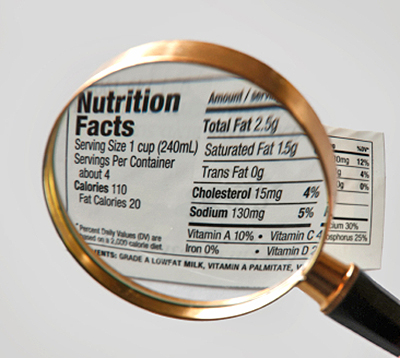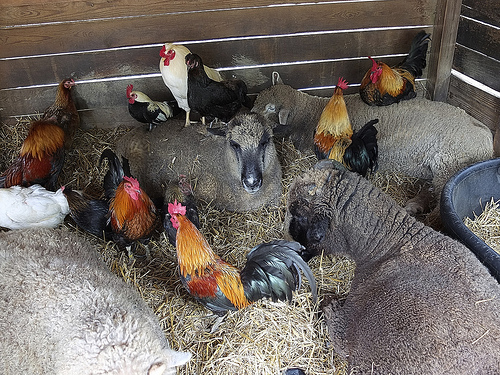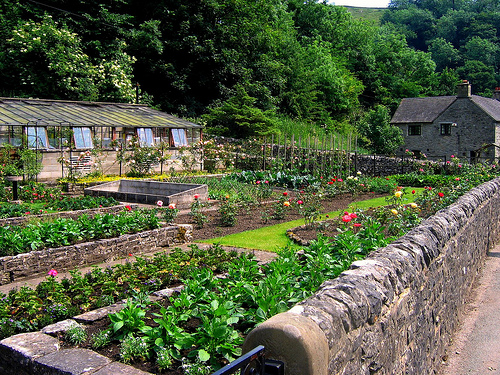You don’t necessarily have to be a hunter-gatherer to live off the land, but if you want to know where your food comes from and what you are eating, you should consider some form of self-sufficiency.
Food labels can be misleading
In the last few years there have been an increasing number of news articles across the globe related to food. Apparently our burgers were filled with horsemeat, our vegetables still come from the other side of the world, and does supermarket packaging really tell us what we are eating? You can always grow sufficient vegetables in a suburban back yard to improve your diet. Websites, including agrarianorganics.com will give you some ideas to get you started, but it’s best that you make your own specific plans for your environment and your family.

photo credit: jpalinsad360 via photopin cc
You will know where your food comes from
An article on the website Economy in Crisis suggests that food imports are responsible for illnesses suffered by 49 million Americans every year. Obviously, one way of getting around this problem is to grow your own food. Living off the land becomes a healthy and viable option. This lifestyle does entail careful planning, though. You have to realize that out of season delights may be a thing of the past, so if you live in Connecticut you will have to learn to live without fresh apricots in December.
Planning is essential
With some careful planning and family discussion, you can plant sufficient vegetables to last an average size family throughout the year. Your crop will yield some of the tastiest produce you’ve ever sampled. One major advantage of growing your own vegetables is that you can produce organic food, without paying some of the ludicrous prices demanded by your supermarket. You can even produce your own compost just from the grass clippings and other waste.
Foraging is definitely living off the land
It’s a good idea to carry out some research, first of all if you want to go foraging. An increasing number of families supplement their diet with free food that grows in the hedgerows and in the woods. Blackberries, sorrel, elderflowers and wild herbs are abundant in most parts of the United States.
If you are considering sourcing wild mushrooms, then go on a nature walk with a recognized guide, you don’t want to end up being poisoned, and there are many such walks throughout the country. The website Eat the Weeds has some great ideas for foraging and how to keep safe.
You can also keep animals
Keeping chickens in an urban environment is growing in popularity. The pleasures of fresh eggs and organic meat are undeniable. The Worldwatch Institute has some useful guidelines for anyone who wants to keep poultry, though regulations vary from state to state. If you only have a small backyard, beekeeping might be more suitable. Living off the land is viable, but you do have to be realistic about your plans and your commitment. Vegetables need nurturing and animals will need your attention, though once you’re organized you’ll always know exactly what you are eating and where it comes from.

photo credit: Remember To Breathe via photopin cc




A thing you should really pay attention to when reading food labels is portion size. I remember years ago I was reading the label on a popular brand of turkey smoked sausage and was really impressed with its low calorie content. My amazement vanished when I read the portion size and discovered it was one ounce. I immediately had visions of how disgruntled my guests would be if I cooked a one pound sausage and invited fifteen people over to share it with me.
Before I retired I occasionally purchasied a Moon Pie from the vending machine in our break room because it was only had a modest amount of calories. Imagine my surprise when I discovered, according to the portion size, I was supposed to be splitting my treat with someone. In my many years of observing peoples eating habits I think it is more normal for a purchaser to eat the whole candy bar or snack cake.
My wife recently got out a pack of Japanese yakisoba and was duly impressed when she saw that the label only listed 20 grams of carbohydrates per serving. I hated to burst her bubble and tell her that the small package, about the same size as a pack of ramen noodles, was intended to feed three people.
I would like to see nutritional content labels based on the content of the entire package. I can do the math myself thank you.
Such an excellent point, Charlie! So many times, you look at things like a bag of chips and realize it’s only 14 chips — or 4 Oreos that are a serving. Very deceptive indeed!
Beautifully colorful barnyard scene!